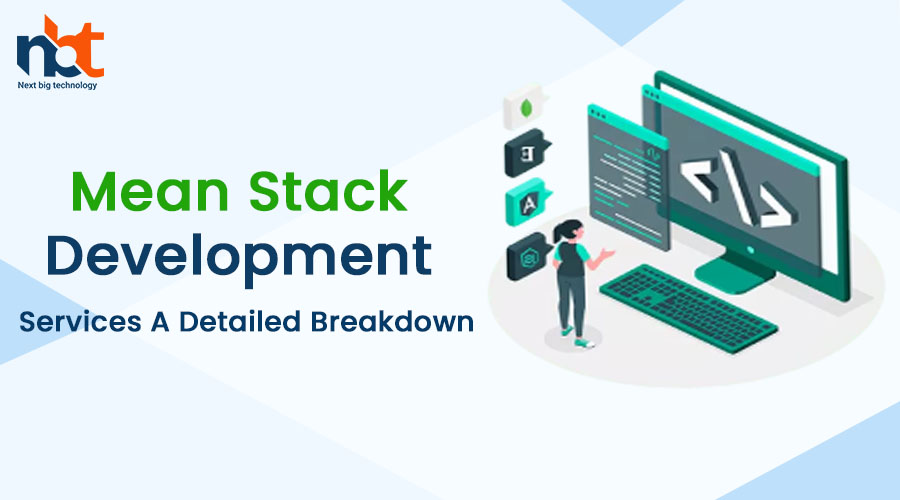Introduction: MEAN stack development has gained popularity for building web applications due to its flexibility, scalability, and seamless integration of JavaScript technologies. If you’re considering using the MEAN stack for your project, it’s important to understand the various components and services involved in MEAN stack development. In this blog, we will provide a detailed breakdown of MEAN stack development services, exploring the essential elements that contribute to the successful implementation of this technology stack.
- MongoDB Development: MongoDB is a NoSQL database used in MEAN stack development to store and manage data. Key aspects of MongoDB development include:
a) Database Design and Modeling: Designing the database schema, defining collections, and establishing relationships between data entities.
b) Data Storage and Retrieval: Implementing CRUD operations (Create, Read, Update, Delete) to store and retrieve data from MongoDB.
c) Query Optimization: Optimizing database queries to improve performance and ensure efficient data retrieval.
- Express.js Development: Express.js is a fast and minimalist web application framework used in MEAN stack development. Key aspects of Express.js development include:
a) API Development: Creating RESTful APIs to handle client-server communication and data exchange.
b) Routing and Middleware: Configuring routes and middleware to handle HTTP requests, perform authentication, and implement custom logic.
c) Error Handling and Debugging: Implementing error handling mechanisms and debugging tools to ensure smooth operation of the Express.js application.
- Angular Development: Angular is a popular front-end framework used in MEAN stack development to build dynamic and interactive user interfaces. Key aspects of Angular development include:
a) UI/UX Design: Designing the user interface and user experience to create a visually appealing and intuitive application.
b) Component Development: Creating reusable components and modules that encapsulate specific functionality and enhance code maintainability.
c) State Management: Implementing state management techniques, such as using Angular services and Redux, to manage application state and ensure data consistency.
- Node.js Development: Node.js is a server-side JavaScript runtime used in MEAN stack development to power the server and handle server-side logic. Key aspects of Node.js development include:
a) Server-Side APIs: Building server-side APIs to handle client requests, perform server-side computations, and interact with databases.
b) Real-Time Communication: Implementing real-time communication using technologies like WebSockets or socket.io to enable instant messaging or live updates.
c) Performance Optimization: Optimizing Node.js applications for improved performance, scalability, and handling of concurrent requests.
- Testing and Quality Assurance: Testing is a crucial aspect of MEAN stack development to ensure the reliability and functionality of the application. Key aspects of testing and quality assurance include:
a) Unit Testing: Writing and executing unit tests to verify the behavior and correctness of individual components or functions.
b) Integration Testing: Performing integration tests to validate the interaction between different components of the MEAN stack application.
c) Performance Testing: Conducting performance tests to measure and optimize the application’s response time and scalability.
- Deployment and DevOps: Deploying the MEAN stack application and managing the development and operations processes. Key aspects include:
a) Continuous Integration and Deployment: Implementing CI/CD pipelines to automate the build, test, and deployment processes for faster and more efficient development cycles.
b) Infrastructure Management: Managing server infrastructure, containerization (e.g., Docker), and cloud platforms (e.g., AWS, Azure) for hosting and scaling the application.
c) Monitoring and Maintenance: Implementing monitoring tools and strategies to identify and resolve issues, ensuring the application’s stability and performance.
Conclusion: MEAN stack development encompasses various crucial components that contribute to the successful implementation and customization of web applications. From MongoDB for data storage, Express.js for server-side logic, Angular for interactive user interfaces, to Node.js for server-side runtime, each element plays a vital role in building scalable and efficient applications. By understanding the breakdown of MEAN stack development services, businesses can make informed decisions, choose the right technologies, and partner with experienced development teams to create robust, feature-rich, and modern web applications that meet their specific requirements.

















